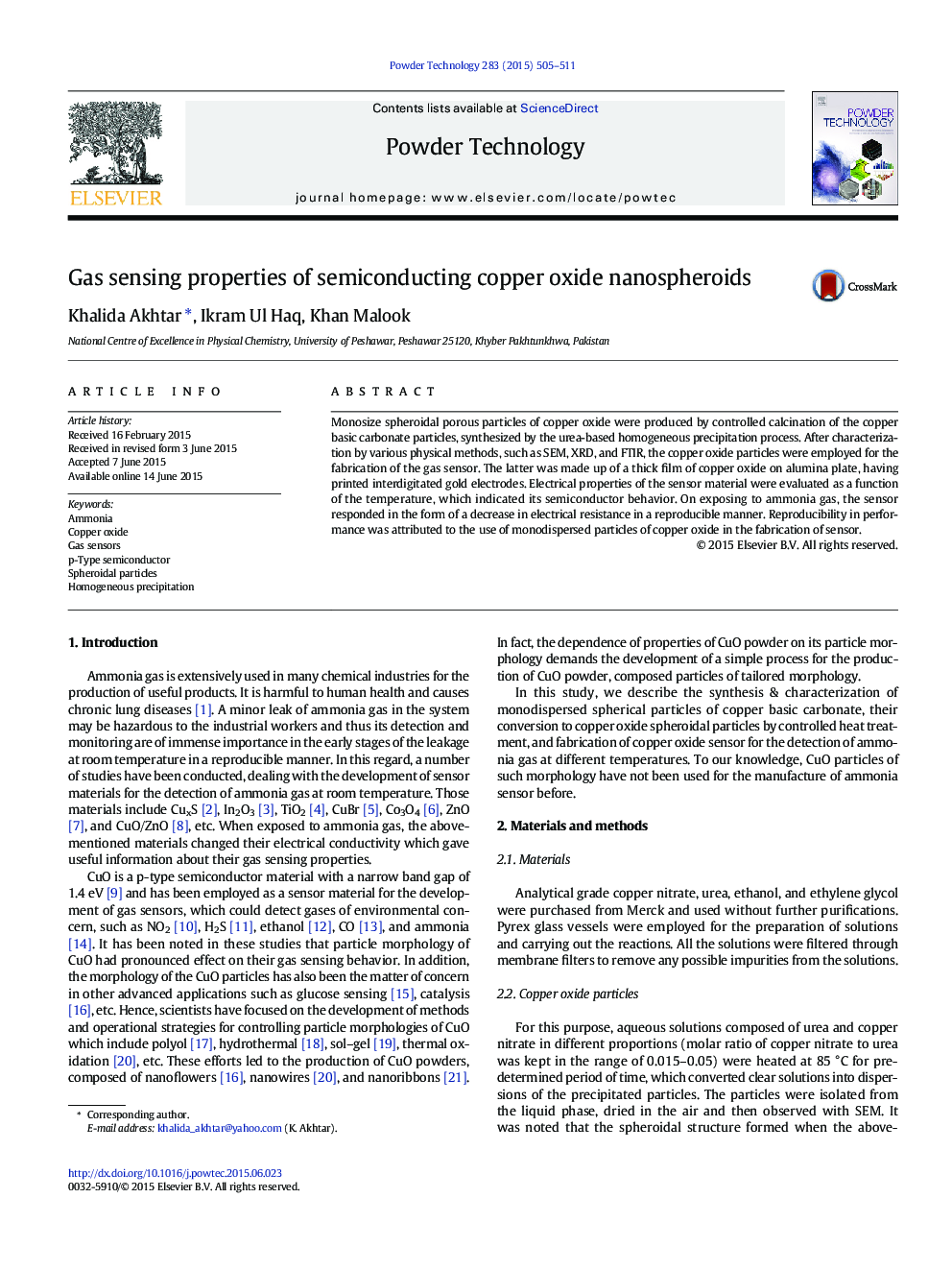| Article ID | Journal | Published Year | Pages | File Type |
|---|---|---|---|---|
| 235439 | Powder Technology | 2015 | 7 Pages |
•Spherical particles of copper basic carbonate were prepared by homogeneous precipitation.•The as prepared particles were converted to CuO porous particles by calcination at 750 °C.•Layer of CuO was screen printed on alumina plate, carrying interdigitated gold electrodes.•Electrical resistance of CuO layer was measured as a function of temperature.•On exposure to ammonia gas, electrical resistance of the fabricated CuO based sensor decreased.
Monosize spheroidal porous particles of copper oxide were produced by controlled calcination of the copper basic carbonate particles, synthesized by the urea-based homogeneous precipitation process. After characterization by various physical methods, such as SEM, XRD, and FTIR, the copper oxide particles were employed for the fabrication of the gas sensor. The latter was made up of a thick film of copper oxide on alumina plate, having printed interdigitated gold electrodes. Electrical properties of the sensor material were evaluated as a function of the temperature, which indicated its semiconductor behavior. On exposing to ammonia gas, the sensor responded in the form of a decrease in electrical resistance in a reproducible manner. Reproducibility in performance was attributed to the use of monodispersed particles of copper oxide in the fabrication of sensor.
Graphical abstractFigure optionsDownload full-size imageDownload as PowerPoint slide
